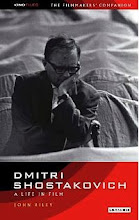Often the designers approach the job very differently than their Western counterparts do: they're more interested in capturing the film's mood or in coming up with something metaphorical. Probably this
 isn't best for comedies (some of them - rightly or wrongly - seem to come out looking quite bleak, if comedic at all!) but darker stories work brilliantly as the designers get to the heart of the matter in a way that hardly ever happens in the west.
isn't best for comedies (some of them - rightly or wrongly - seem to come out looking quite bleak, if comedic at all!) but darker stories work brilliantly as the designers get to the heart of the matter in a way that hardly ever happens in the west.A good example is Roman Kowalik's poster for Tarkovsky's The Sacrifice. The film doesn't include any (literal) crucifixions, the house where everything happens isn't shaped like a church/cross and the hero remains fully-clothed throughout. Yet this image captures the film's tortured and joyful austerity. The image that was used in the West - the finale's solitary sapling worked well enough as a symbol of hope but it almost gave too much away: even without seeing the film, Tarkovskians would probably guess that that was how it ended. Kowalik leaves us wondering how (I don't suppose 'whether' was ever up for grabs) the anonymous man will escape. Or even if he wants to.
There are too m
 any great posters to put in a single blog entry, but here's one of my favourites: Andrzej Pagowski's haunting image for Kieślowski's A Short Film About Love (Krótki film o miłości, 1988). It brilliantly captures the film's desperate ambiguity regarding what I suppose might have once been called the ownership of the gaze.
any great posters to put in a single blog entry, but here's one of my favourites: Andrzej Pagowski's haunting image for Kieślowski's A Short Film About Love (Krótki film o miłości, 1988). It brilliantly captures the film's desperate ambiguity regarding what I suppose might have once been called the ownership of the gaze.Here's the press release from The Polish Cultural Institute and there'll be some more information on the Cinéphilia West website in due course. Note that the exhibition is at Cinéphilia West, on Westbourne Grove, rather than the HQ, off Brick La
 ne.
ne.And now: a little competition, I've removed the title etc from this poster for a very famous film. Anyone identifying it will win ... a lifetime's subscription to this blog!

1 comment:
Polish film posters are indeed something quite unique and spectacular. I've actually used them for a pub quiz before now. Sometimes the ideas people get can be very different from the reality, especially when it comes to comedies, as you pointed out in your post!
However, I'm afraid I can't even hazard a guess with that one!
Post a Comment